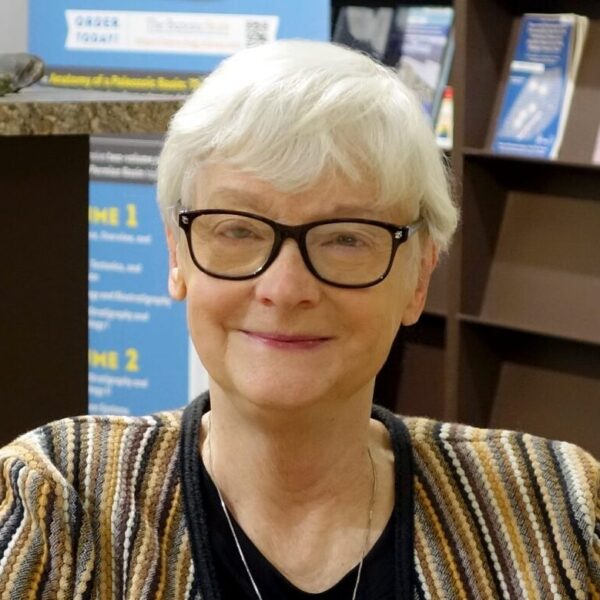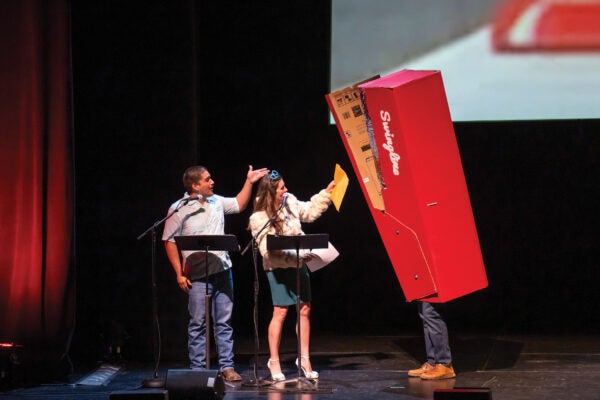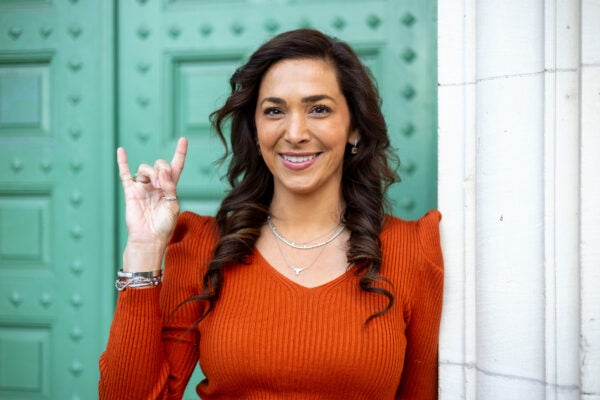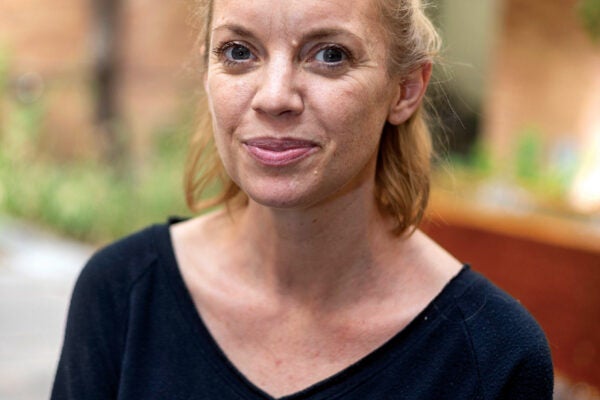The University of Texas at Austin Staff Service Awards honor longtime staff members for their commitment to the university. In 2021, more than 800 employees with 10 or more years of service are being recognized, including 15 staff members with 40 or more years of service. You can see a list of all the recipients here.
Texas Connect asked two of these staff members — Amanda Masterson and John Wheat — to reflect on their time at UT. Each is being recognized for 45 years of service to the university. Parts of this Q&A have been edited for clarity and brevity.
Amanda R. Masterson
Senior administrative associate/bookstore manager, The Bureau Store, UT Bureau of Economic Geology
What are some of your earliest memories of your time at UT?
I came to UT as a graduate student in library and information science in the late 1970s. I recall standing in a very long line, on the Belmont ramps, in the summer, to register in person for classes.
My apartment (still standing!) was near Pease Park, so one of my earliest memories was of an Eeyore’s Birthday Party there, where students and others were dressed in elaborate costumes. (There might have been some adult beverages available.)
Other memories include riding the old (unairconditioned) UT shuttle buses and the huge excitement (and noise) generated by UT football games.
Tell us about a former colleague who had an impact on your time at UT.
There have been so many! My professors in the Graduate School of Library and Information Sciences and the Department of English, and my co-workers in the General Libraries and, for most of my career, at the Bureau of Economic Geology. Every person that I’ve encountered at UT has taught me the importance of being patient, kind and persistent.
I’d also like to give a shout-out to my former bureau editors (the FBEs), who’ve known each other for some 40 years: Susie Doenges, Marie Collins, Michelle Gilson, Lana Dieterich, Tina Jackson and Susan Shaw. Until COVID-19 hit, we would meet nearly monthly for birthday lunches (at “the round table” in the Arboretum’s Cheesecake Factory). All worked with me at BEG and are now retired; I’m the last holdout.
What similarities and/or differences do you see between the world now and the world when you started at UT?
People are still just people, with their own issues and concerns. Parents are still concerned about their children-as-college-students; students still worry about finding a job and a person to share their lives with after graduation.
Differences include more communication between countries of the world, as enabled by technology. More awareness of societal problems such as injustice and economic disparity. Advances in space exploration. More environmental awareness, especially of climate change.
What hasn’t changed on campus since the day you started?
The expansive main campus (lots of walking). Masses of students. Scarce parking spaces. Brilliant and hardworking students, staff and faculty. Trees, fountains, squirrels, grackles.
If students from the year you started at UT could talk with students now, what do you think they’d find the most surprising?
Cellphones and other portable devices, for nearly everyone, everywhere, on and off campus. And the increased role of students in making decisions about university policies.
What are some reasons you’ve stayed at UT all this time?
My past and present coworkers at BEG, the abundant opportunities UT offers for continuing to learn and grow, the reputation and reality of UT Austin as a world-class institution.
And a strong dislike of job interviews.
What advice would you give to new staff or faculty members at UT?
Be willing to learn, be patient and kind to everyone, and plan on staying here at UT for a very long time, so that over time you’ll see how rewarding it is to learn, work and teach here, even in challenging times. Be flexible. Persist. Hook ’em!

John Wheat
Archives translator/sound archivist, Briscoe Center for American History
What are some of your earliest memories of your time at UT?
As a student, I remember the time of campus segregation in the early 1960s, as well as UT’s first national championship in football in 1963. John F. Kennedy’s assassination made the deepest impact on campus.
In my faculty and staff days of the 1970s, it would be the world before personal computers and the internet, a world of typewriters and correcting fluid.
Tell us about a former colleague who had an impact on your time at UT.
He is still a colleague today. Dr. Don Carleton, director of the Briscoe Center for American History, came aboard shortly after I started working there in 1979 and encouraged me to use my background in radio and music to develop the center’s music resources. These have now become one of the major collection strengths in the Briscoe Center’s holdings. That experience, along with my continued role as Spanish archives translator, has largely defined my 40-plus years working at UT.
What similarities and/or differences do you see between the world now and the world when you started at UT?
I have always felt that the university’s commitment to excellence and integrity in its operations were more than slogans. The differences now include a greater awareness of and commitment to diversity and human dignity in the workplace and classroom.
How has the campus itself changed?
Physically, just as with the city of Austin, it is almost unrecognizable from the 1960s. The core Forty Acres of that time is still largely in place, but you have to know where to find it. I find myself constantly reminiscing about “what used to be” in certain places where I now see either a new vacant spot or new construction.
Monuments and statuary of the “old days” are disappearing, and new socially conscious commemorations have taken their rightful place. In general, the whole place has just grown and expanded, from 20,000 to 50,000 students and across Interstate 35 to eastside neighborhoods.
If students from the year you started at UT could talk with students now, what do you think they’d find the most surprising?
They would be amazed at how technically skilled and socially and politically aware today’s students have to be.
What are some reasons you’ve stayed at UT all this time?
The main reasons are that my job is personally rewarding, and the working atmosphere at the Briscoe Center is both creative and congenial. That is why I am well past the usual retirement age and haven’t left yet.
What advice would you give to new staff or faculty members at UT?
Invest a little time at the outset in learning about UT history and the physical setting of the campus. And above all, come early, wear burnt orange and be loud!



